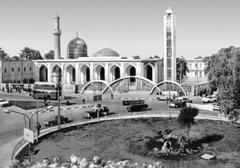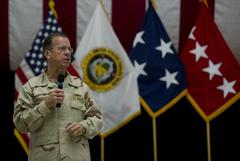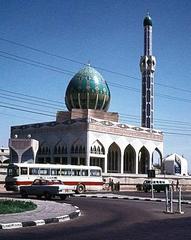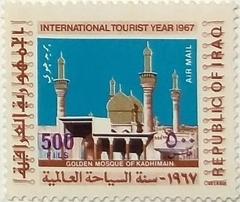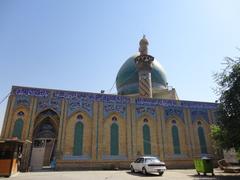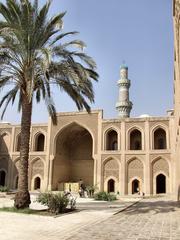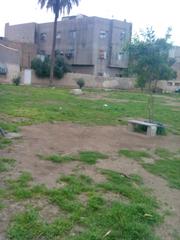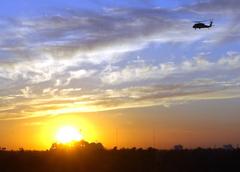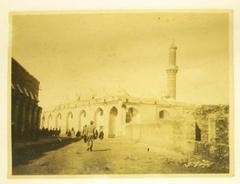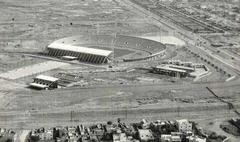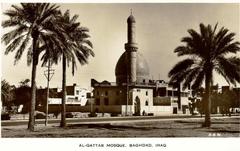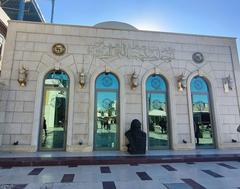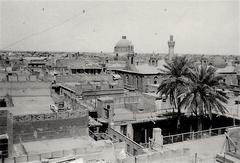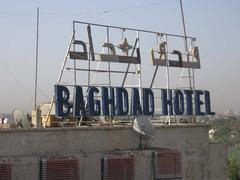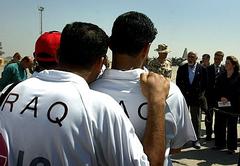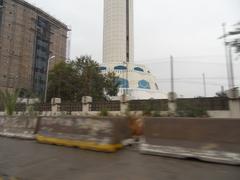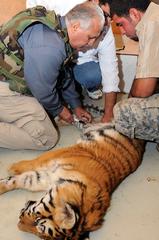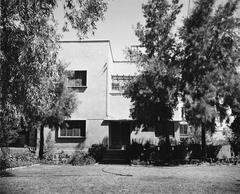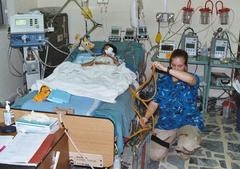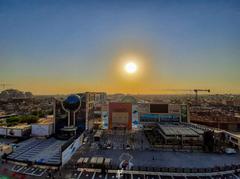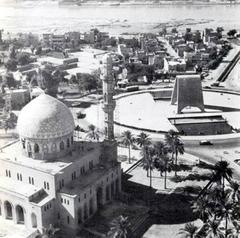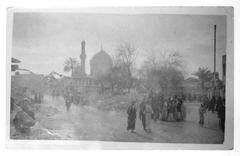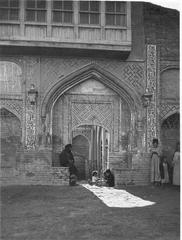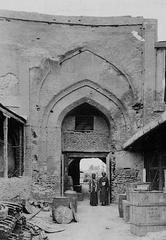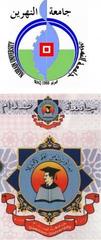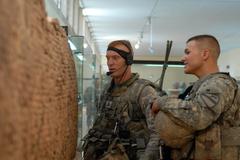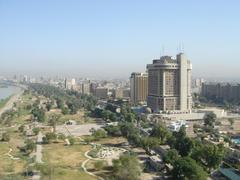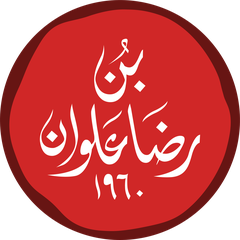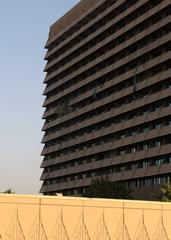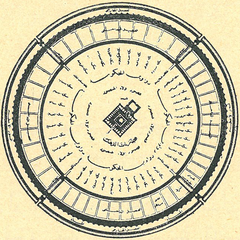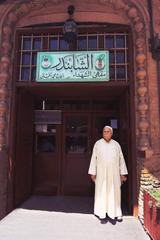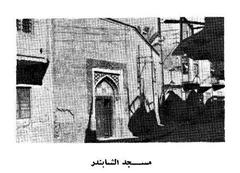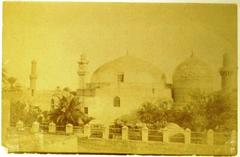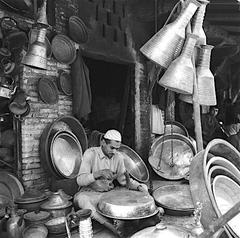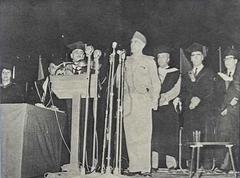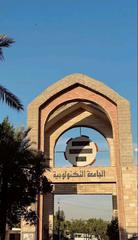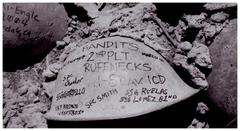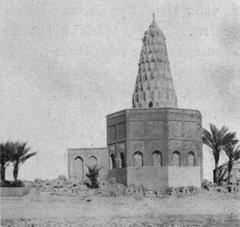
Republican Palace Baghdad: Visiting Hours, Tickets, and Historical Significance Guide
Date: 04/07/2025
Introduction
The Republican Palace in Baghdad, known as القصر الجمهوري (Qasr al-Jumhuriya), stands as one of Iraq’s most iconic landmarks—an enduring symbol of the nation’s turbulent political history, cultural richness, and architectural grandeur. Erected in the 1950s by King Faisal II as a royal residence, the palace has been at the heart of every major era in modern Iraqi governance. Its layered past—from monarchy, through republic, to occupation and restoration—mirrors the nation’s own journey. Today, the palace remains a restricted site within Baghdad’s Green Zone, but for those able to visit, it offers deep historical insights and an unparalleled architectural experience.
This comprehensive guide provides detailed historical context, architectural highlights, essential visitor information (including visiting hours, ticketing, and security protocols), travel tips, and advice for exploring the palace and nearby cultural attractions. For up-to-date travel resources, the Audiala app and referenced sources can further assist in planning a safe and meaningful visit. (Republican Palace Baghdad: Visiting Hours, Tickets & Historical Insights, World of History, African Jacana)
Table of Contents
- Historical Overview
- Architectural Features
- Visiting the Republican Palace
- Nearby Attractions
- Health, Safety, and Emergency Tips
- Frequently Asked Questions (FAQ)
- Conclusion and Further Resources
Historical Overview
Royal Origins and Architectural Vision
Commissioned by King Faisal II in the 1950s to replace the Al-Rehab Palace, the Republican Palace was designed by British architect J. Brian Cooper, blending modernist structures with traditional Middle Eastern motifs. The central domed rotunda flanked by two wings, grand entrance fountain, and imported materials such as Lebanese limestone and Italian marble showcased Iraq’s modernization ambitions and the monarchy’s desire for grandeur. Tragically, King Faisal II was assassinated before ever residing in the palace, and completion was finalized in 1959. (everything.explained.today, Wikipedia)
Transformation into the Republican Palace
Following the 1958 coup and the establishment of the republic, the palace was repurposed as the seat of government. Saddam Hussein’s era saw the complex expanded with new wings, a distinctive semi-kidney-shaped pool, and lavish decorative elements, including monumental bronze heads. The palace’s riverside location and imposing architecture underscored its central role in power and pageantry.
Political and Diplomatic Significance
The Republican Palace served as a venue for major political decisions, diplomacy, and statecraft. Under Saddam Hussein, it hosted foreign dignitaries and symbolized the regime’s authority. In 2003, the palace was captured intact by coalition forces and used as headquarters for the Coalition Provisional Authority and, later, the U.S. Embassy. This period marked a dramatic shift in the palace’s role—from a symbol of state power to a center for foreign administration. (World of History, Traveler Bibles)
U.S. Occupation and Recent Developments
During the occupation, the palace was adapted to support large numbers of personnel, with significant modifications to its infrastructure. Restoration efforts in 2011, led by a Turkish firm, aimed to repair war and looting damage, restoring the palace’s former splendor for official use and select ceremonial functions. (everything.explained.today)
Architectural Features
Style and Layout
The Republican Palace is an architectural blend of neo-classical and Middle Eastern styles. Its core is a domed rotunda with symmetrical wings, surrounded by lush gardens along the Tigris River. Notable features include:
- Grand Halls and Meeting Rooms: The main rotunda, inspired by Rome’s Pantheon, boasts limestone ceilings and mural-covered domes depicting regime symbolism.
- Labyrinthine Passages: Corridors connect offices, residential quarters, and service areas, designed for both ceremonial procession and security.
- Imported Materials and Craftsmanship: Lebanese limestone, Italian marble floors, and vibrant Islamic geometric patterns on ceilings reflect exceptional artistry. (The Free Library, Trek Zone)
Notable Interior and Exterior Elements
- Monumental Bronze Heads: Added during Saddam’s era, these adorn the roof and symbolize authority.
- Grand Ballroom: Murals and domes with propagandistic imagery.
- Massive Doors and Portals: Gilded or brass-clad, marking ceremonial entrances.
- Gardens and Setting: Manicured grounds, fountains, and riverside vistas offer a stark contrast to the palace’s imposing façade.
Visiting the Republican Palace
Visiting Hours and Tickets
Public access to the Republican Palace is highly restricted due to its location within the Green Zone and ongoing governmental use. There are no regular public visiting hours or on-site ticket sales. Access is generally limited to:
- Pre-arranged guided tours through authorized agencies or official delegations.
- Special events or cultural programs, announced occasionally by the Iraqi Ministry of Tourism.
Typical arrangements:
- Visiting hours: Usually mornings (from 9:00 AM), ending by early afternoon. Specific times depend on security and tour operator schedules.
- Tickets: No public sales; admission is included in the cost of pre-booked tours, with prices varying by operator and group size.
- Advance booking: Arrangements should be made several weeks in advance to secure permits.
Accessibility and Guided Tours
- Some areas offer partial accessibility, but uneven terrain and historic layouts may pose challenges for visitors with mobility impairments.
- Tours are led by knowledgeable guides, often in English, Arabic, or French.
- Photography is typically restricted; always seek permission from your guide.
Security, Entry, and Transportation
- Security: The Green Zone is heavily guarded, featuring multiple checkpoints and military presence. Carry your passport, visa, and all required permits at all times. (Xplrverse)
- Entry: Only possible via licensed tour operators or official invitations. Independent visits are not permitted.
- Transport: Arrange private, pre-approved vehicles (often armored) through your tour provider. Avoid public transportation.
- Airport transfers: Should be organized by your operator or hotel from Baghdad International Airport.
On-Site Experience and Etiquette
- Facilities: Restrooms are limited; carry hand sanitizer and bottled water. No food services on-site.
- Dress code: Modest attire is mandatory—long sleeves and trousers for men, and head coverings for women.
- Behavior: Remain respectful, follow guide and security instructions, and avoid discussions on sensitive political topics.
Nearby Attractions
Extend your exploration of Baghdad’s heritage with these notable sites:
- National Museum of Iraq: Renowned for its ancient Mesopotamian artifacts.
- Al-Mutanabbi Street: Historic book market and cultural hub.
- Abbasid Palace: A relic of Baghdad’s medieval golden age.
- Tigris River Promenade: Offers scenic views and local culture.
Health, Safety, and Emergency Tips
- Drink only bottled or filtered water.
- Carry essential medications and a basic first-aid kit.
- Summers are extremely hot; hydrate and protect yourself from the sun.
- Cash is king; bring new, unmarked US dollars—credit cards are rarely accepted.
- Register with your embassy before arrival.
- Keep emergency contact details for your tour operator, embassy, and local services.
- Local SIM cards are available; coverage can vary within the city.
Frequently Asked Questions (FAQ)
Q: What are the Republican Palace visiting hours?
A: Access is restricted; visits are typically arranged for mornings (starting at 9:00 AM) through authorized tours or special events.
Q: How do I get tickets to the Republican Palace?
A: There is no public ticketing. All access is through licensed tour operators who manage permits and clearances.
Q: Is the Republican Palace wheelchair accessible?
A: Accessibility is limited; check with your tour operator about accommodations for mobility impairments.
Q: Can I take photos inside the palace?
A: Photography is generally restricted; always seek your guide’s permission.
Q: What are the main nearby historical sites?
A: The National Museum of Iraq, Al-Mutanabbi Street, Abbasid Palace, and Baghdad Tower are all accessible with proper arrangements.
Conclusion and Further Resources
The Republican Palace is both an architectural marvel and a living testament to Iraq’s political evolution and cultural resilience. While access is highly controlled, those who secure a visit will gain insight into the narratives that have shaped modern Baghdad. Proper planning, engagement with reputable operators, and respect for security and cultural protocols are essential for a safe and enriching experience.
For the latest updates, visitor information, and travel resources, download the Audiala app, read our other guides on Iraqi heritage, and follow us on social media.
For more information:
- Republican Palace Baghdad: Visiting Hours, Tickets & Historical Insights
- History of Baghdad - World of History
- Baghdad - African Jacana
- Republican Palace, Baghdad - Wikipedia
- Fine art: Iraq’s Republican Palace offers wonders to the eye - The Free Library
- Is Baghdad Safe to Visit 2025? - Traveler Bibles
- Is Iraq Safe for Travelers in 2025? - Xplrverse
- Things to do in Baghdad - TravelSetu
- Baghdad - Howsafe.net


